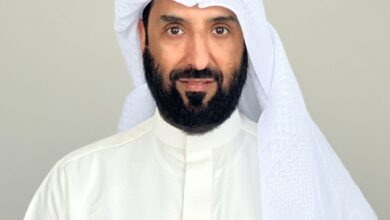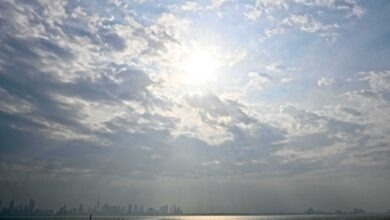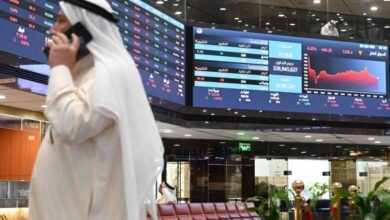Kuwait to confront dust storm crisis with green solutions and regional cooperation

Dust storms have become a near-permanent fixture in Kuwait’s atmosphere, disrupting daily life, impacting health—particularly respiratory conditions—and reducing road visibility due to sand encroachment.
Experts, including Dr. Ali Al-Dosari of the Kuwait Institute for Scientific Research (KISR), link the intensification of these storms to weak surface layers caused by insufficient rainfall, compounded by human activities such as desertification and poor land management, reports Al-Rai daily.
Al-Dosari emphasized that while dust is a natural part of the ecosystem, its recent surge demands both local adaptation and regional cooperation.
Strategic plans developed by KISR aim to combat desertification and increase vegetation cover, which helps stabilize soil and reduce dust. Studies show that greening efforts around residential areas can reduce dust deposits by up to 26%, while native, drought-resistant plants like Awsaj and Ramth can significantly prevent dust movement.
Key hotspots, such as Mutlaa north of Jahra, lack vegetation and contribute heavily to dust storms, while greener areas like Jahra show up to 50% less dust accumulation.
Despite the economic burden and public safety risks of sand accumulation, Al-Dosari noted that dust also plays a beneficial role in land rehabilitation by transporting organic matter and seeds, especially aiding recovery in areas affected by oil contamination.
Efforts to stabilize dust sources are underway in collaboration with the UN, Iraqi universities, and the Ministry of Agriculture.
The most impactful project, launched in 2023 in northern Nasiriyah, aims to stabilize soil using Euphrates-fed canals and native crops. Early results indicate a halt in dust storms from this source, with projections to reduce regional dust storms by 35–40%, protecting nearly 40 million people across Kuwait, Iraq, Iran, and the Gulf.
However, challenges remain. Al-Dosari recommends ten actionable measures, including government integration, ecological building codes for schools, Gulf-wide standards for air conditioning, and annual community-driven planting initiatives. He also advises against establishing green belts along borders, warning they could obstruct the natural flow of seed-bearing sands, which are vital for soil regeneration.
Finally, Kuwait faces four key dust sources — Iraq’s Maysan outpost (stabilized), northern Nasiriyah (priority target), southern Samawah (long-term concern), and Kuwait’s own Bubiyan Island due to its sediment-rich terrain.
These require sustained, multi-level strategies to mitigate health risks—ranging from eye infections to cardiovascular diseases and increased mortality—and promote ecological resilience.















